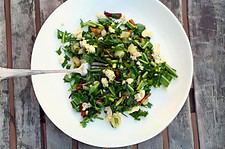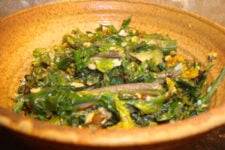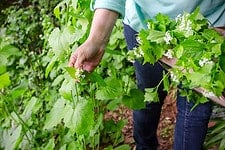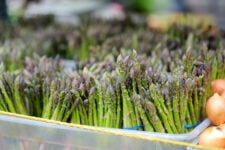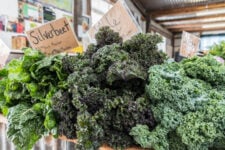Have you ever heard of wild ramps? These alliums (also known as wild leeks) have become increasingly popular in recent years. Not only do they symbolize the first breath of spring in the American Northeast, but their flavor is incredibly distinctive – think green onion, but with a punch of garlicky bite.
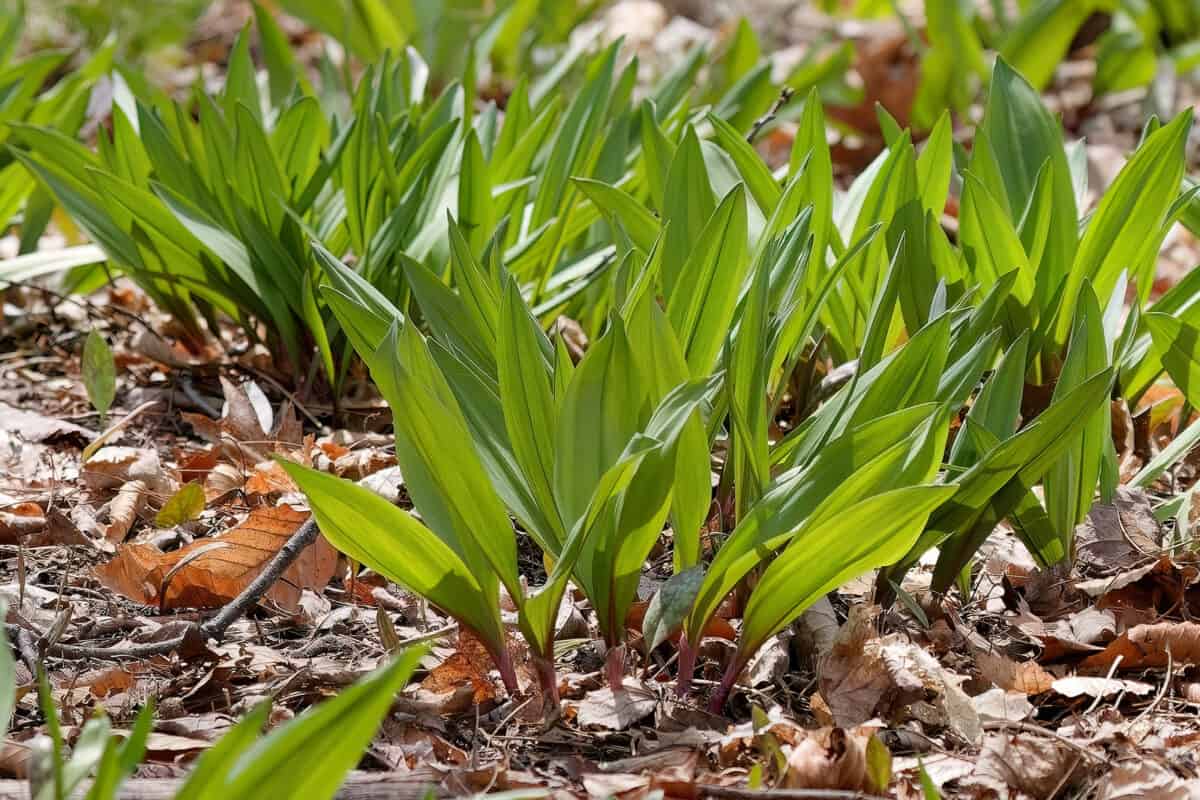
Like many leafy greens, wild ramps offer a generous source of nutrients. They provide almost double the amount of vitamin C than oranges. Wild ramps also contain nutrients that boast blood-clotting and anti-cancer properties (1). And thanks to the amazing flavor, you’ll have no problem adding this superfood to your diet.
If you visit a New England farmers market in April, you’ll surely witness “rampmania” in full swing. These wild alliums are only available for a fleeting six-week season, so you might have to compete with chefs and restaurateurs to snag a bunch. Wild ramps have become popular in the foodie scene since they add depth and flavor to pretty much any dish imaginable.
But more on that later. First up, let’s talk about the various wild ramp varieties and where to find them.
Different Wild Ramp Varieties and Their Typical Seasons
In North America, this flavorful allium comes in two main varieties.
The most common wild ramp is called Allium Tricoccum. It also goes by the name wild leeks or wild spring onions. It has tall, green leaves attached to a large pink or white bulb. You’ll find this variety springing up all across the Northeast United States in large patches that can span acres.
There’s also the lesser-known variety called the narrow-leaf ramp, or Allium Burdickii. This species is rare, with little known about its origins. It was recently discovered in Pennsylvania, and its growing habitat is restricted to small patches scattered throughout the Midwest. It looks very similar to the common wild ramp variety, but as the name suggests, the leaves are narrower.
Both ramp varieties share the same early spring growing season. The first leaves emerge after the last frost, typically between March and April. You can catch them for about a month before the leaves start wilting in early May (2).

Wild Ramp Season in Different Parts of the World
While you won’t find the Allium Tricoccum variety outside of North America, you will find a similar variety called ramsons, or Allium Ursinum. Think of this plant as wild ramp’s cousin; it has the same zesty, garlicky flavor but with slightly larger leaves.
Also known as wood garlic, wild garlic, bear leaf, or buckrams, ramsons are native to Britain and parts of Europe. These days, you can find them in moist, deciduous woodlands across Britain, Europe, and Northern Asia.
However, exercise caution while foraging this variety. Due to the larger leaf size, ransoms show an uncanny similarity to Lily of the Valley, which is poisonous.
Benefits of Consuming Wild Ramps During Their Peak Season
Consuming wild ramps during their peak season can offer plenty of benefits, both for your health and the environment.
During their peak season, wild ramps are at the height of their nutritional value. This means you’ll be getting the most bang for your buck when it comes to vitamins and minerals. Other than the high vitamin C kick, wild ramps offer two sulfur compounds called thiosulfinates and cepaenes which assist in blood clotting and may even protect against cancer (1).
Health benefits aside, consuming wild ramps at their peak can also be beneficial for the environment and the local economy. These leafy greens have a naturally low carbon footprint since their growing season is too short to handle being shipped across the country. You have to buy wild ramps from local foragers and farmer’s markets, which helps support small local businesses.
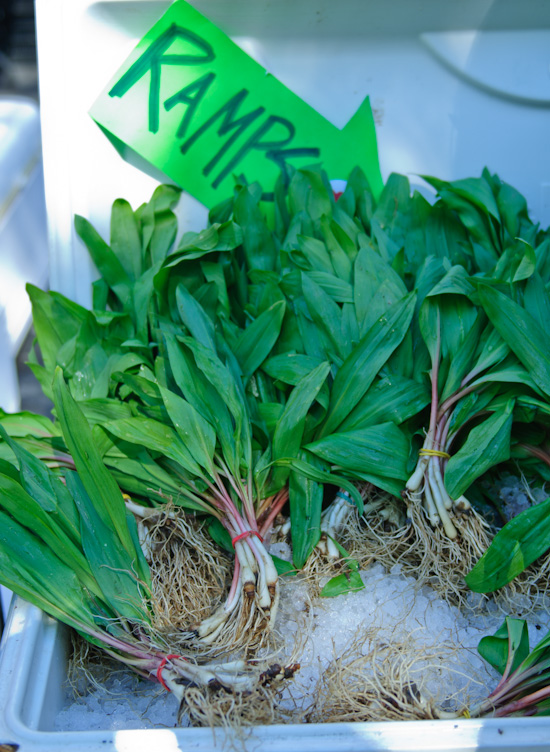
And since wild ramps are often foraged, it means they are not grown in a monoculture system with pesticides or fertilizers. This can help support a more sustainable and regenerative food system, which is better for the planet in the long run.
Recipes to Try During Wild Ramp Season
Have I sold you on this tasty green? Here are some of my favorite fresh, spring recipes to make whenever I score some wild ramps.
- Eggs and Greens With Ramps and Cilantro – A simple, minimalistic egg dish bursting with protein and fresh herbal flavors.
- Dandelion Salad with Ramps, Bacon, and Blue Cheese – A bold, spring salad fusing hearty ingredients like bacon and blue cheese with zesty greens.
- Simple Asparagus and Ramp Soup – A soothing soup merging silky potatoes with asparagus and wild ramps.
- Creamy Ramp Butter – A genius way to preserve ramps in a rich, flavorful butter.
- Easy Ramp Pasta – A simple-yet-decadent pasta dish featuring bright lemon, fresh parm, and herbaceous ramps.
- Ramp Chimichurri – A bold chimichurri sauce to dress up eggs, tacos, meats, and more.
- Sea Salt and Lemon Grilled Ramps – Simple charred ramps seasoned with olive oil, lemon juice, and sea salt.
- Ramp Gnocchi – A comforting, stick-to-your-bones meal for those chilly spring nights.
- Morel Mushroom and Ramp Chowder – A heavenly, creamy soup featuring the best of spring’s bounty.
- Wild Ramp Scones – A savory scones that are unapologetically garlicky.
- Quick Pickled Ramps – Another tasty way to preserve ramps to enjoy outside the short growing season.
- Ramp Pesto – A pungent pesto bursting with lemony, garlicky flavors.
- Ramp Rice – A simple rice dish that makes a perfect side or base for a spring meal.

